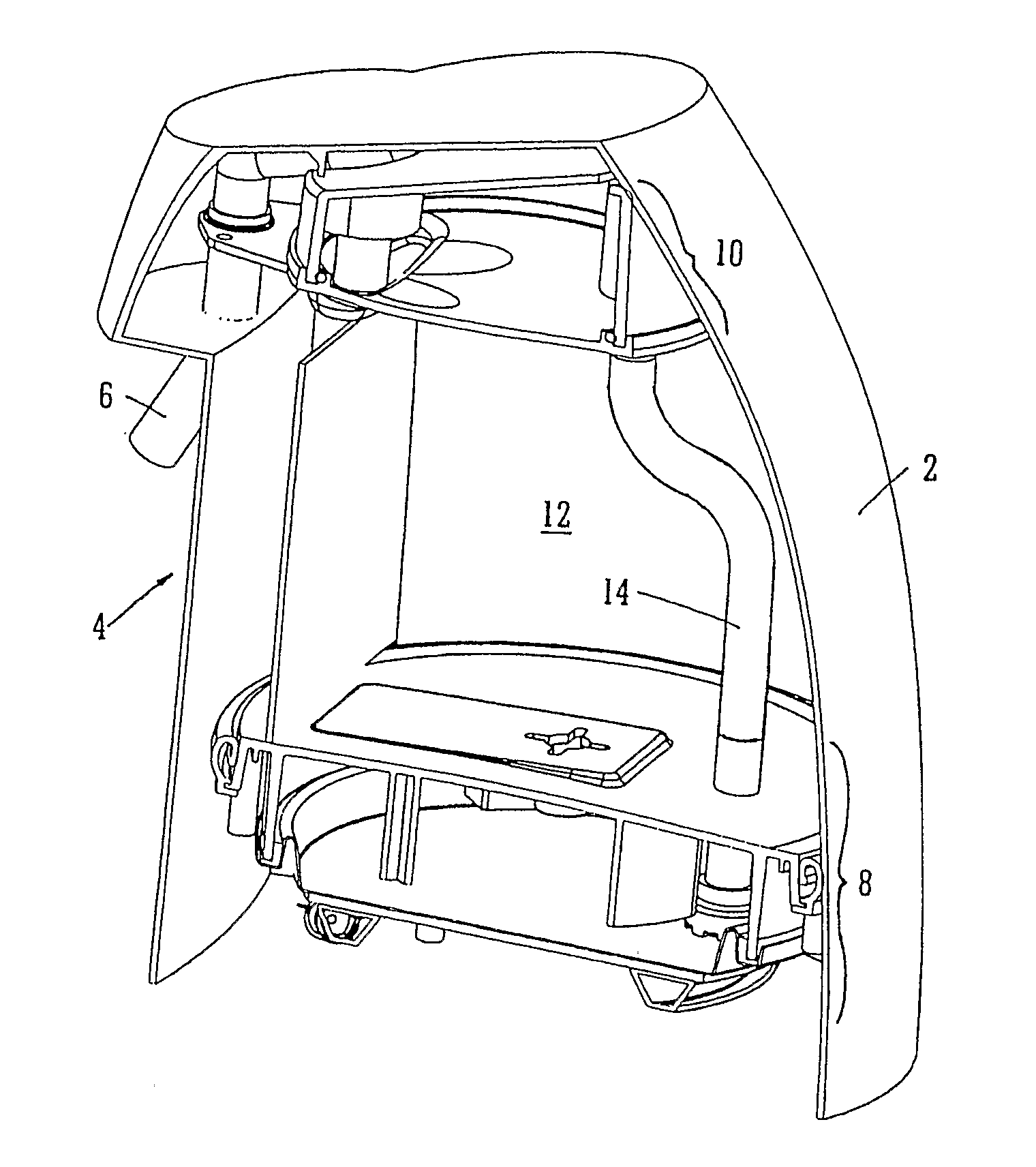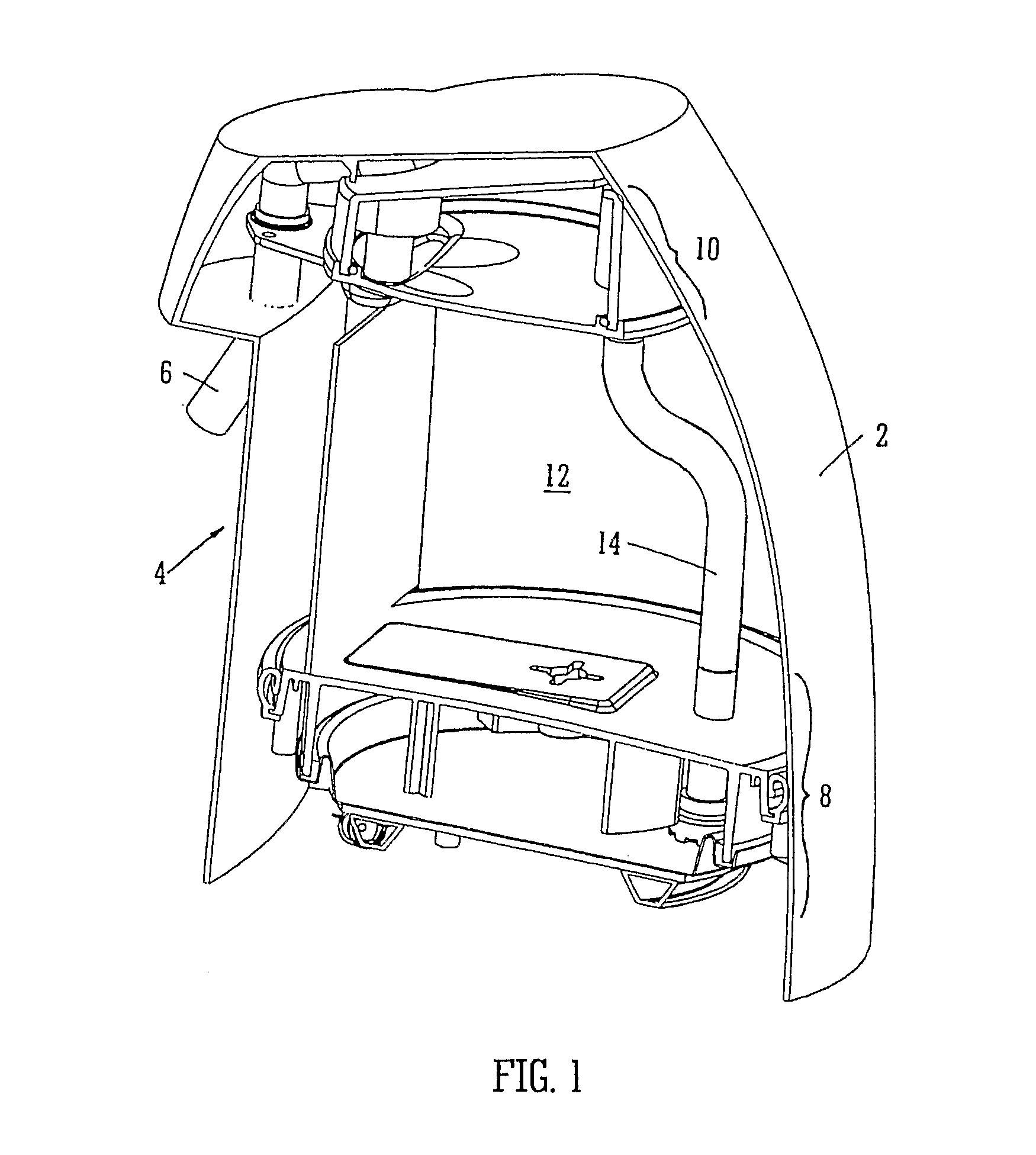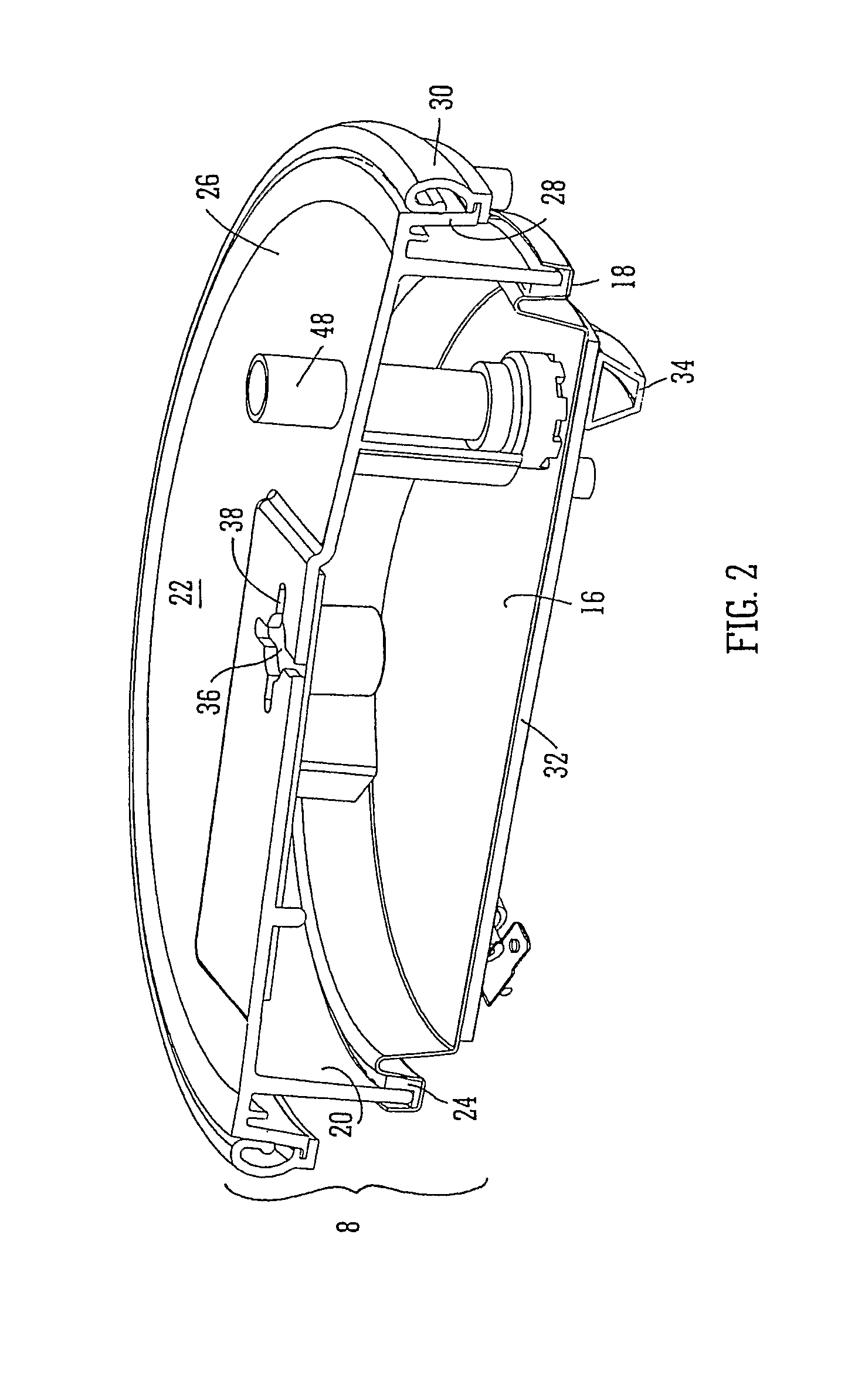Liquid heating devices
a heating device and liquid technology, applied in the direction of electric heating for furnaces, furnaces, kitchen equipment, etc., can solve the problems of increasing the time taken for water to heat from cold, inconvenience for users, and increasing the time taken for it to boil, so as to reduce the amount of steam, reduce the “thermal shock”, and minimize the reset time of a bimetallic actuator
- Summary
- Abstract
- Description
- Claims
- Application Information
AI Technical Summary
Benefits of technology
Problems solved by technology
Method used
Image
Examples
Embodiment Construction
[0085]Turning firstly to FIG. 1 there is shown a hot water dispensing vessel which has an outer body 2 with a front “undercut” portion 4 defining a space that permits a user to place a cup or other receptacle under an outlet spout 6. Inside, the vessel is divided into three main parts. In the lower part of the vessel is a heating chamber 10 which will be described in greater detail below with reference to FIGS. 2 and 3. At the upper part of the vessel is a dispensing chamber 10 which will be described in greater detail below with reference to FIG. 4. Between the heating chamber 8 and the dispensing chamber 10 is a water reservoir section 12. This can be filled using a suitable opening in the body (not shown). A conduit tube 14 passes through the water reservoir 12 and connects the heating chamber 8 to the dispensing chamber 10.
[0086]Turning now to FIGS. 2 and 3, the heating chamber 8 may be seen in more detail. The base of the heating chamber is defined by an underfloor heating elem...
PUM
 Login to View More
Login to View More Abstract
Description
Claims
Application Information
 Login to View More
Login to View More - Generate Ideas
- Intellectual Property
- Life Sciences
- Materials
- Tech Scout
- Unparalleled Data Quality
- Higher Quality Content
- 60% Fewer Hallucinations
Browse by: Latest US Patents, China's latest patents, Technical Efficacy Thesaurus, Application Domain, Technology Topic, Popular Technical Reports.
© 2025 PatSnap. All rights reserved.Legal|Privacy policy|Modern Slavery Act Transparency Statement|Sitemap|About US| Contact US: help@patsnap.com



